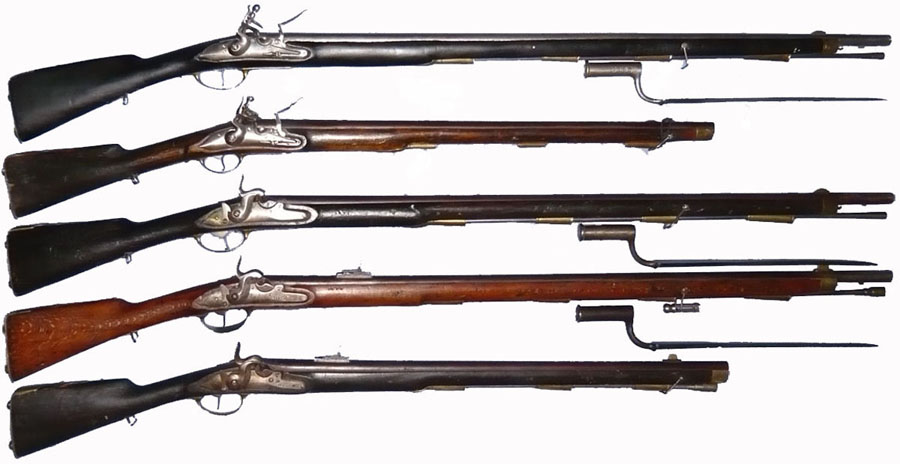M1774 Infantry musket
A series of long, large and black musket models were in use by the Danish-Norwegian military forced throughout most of the 1700’s. These long-guns were awesome! Brass butt plates with huge screws, large locks, brass ramrod pipes and magnificent trimmings. Theese are long-guns with true decoration value.
Norway had tens of thousands old Danish produced Kronborg muskets by 1814 – most of, already at the point becoming obsolete. While Sweden started a huge production of “new and modern” flintlock long-guns in the early 1800’s, the Norwegian army kept the Danish muskets for years to come. As better technology came, these old long-guns were gradually converted and modernized into a variety of models. The muskets from between the M1746 and the M1807 were all fairly similar and most of them were converted to one of the following models. Smart move – saved a serious amount of moneyand prepared Norway for an early start when the arms-race started for real in the 1840’s.
 he conversion from flintlock to percussion was only removing the outer flintlock parts from the lock-plate. Inserting a percussion bit on the barrel and a new hammer (+ the Swedish dog catch). It was a very inexpensive exercise.
he conversion from flintlock to percussion was only removing the outer flintlock parts from the lock-plate. Inserting a percussion bit on the barrel and a new hammer (+ the Swedish dog catch). It was a very inexpensive exercise.I have chosen to show the M1774 in the different variations, as this was the “biggest, baddest and blackest” of them all. It was also the one Norway had the most the of. Just about all models were convertet, most to several different of the ones mentioned, but two stick out. the M1769 musket was mainly converted to the M1769/93 drill musket and the M1788 sniper musket til the M1788/1841/51 pillar breech rifle. But you might also find these in other configurations. The muskets from before 1760 were mainly either just converted to the ?/1841 percussion muskets or the Borgerbevæpning (Citizens armoring) musket ?/1841/60 – I don’t count that as a military long-gun, so it is not covered here.
The military versions of the M1774 are as follows, from the top
M1774 Infanterimuskett – infantry flintlock musket
M1774/93 Eksersergevær – shortened drill musket for the jägers. No bayonet.
M1774/1841 Infanterimuskett i perkusjon – infantry percussion musket, converted at Kongsberg Våpenfabrikk
M1774/1841/51 Tapprifle – infantry pillar breech rifle converted at Kongsberg Våpenfabrikk
M1774/1841/60 Tappstudser – shortened pillar breech rifle without bayonet at Kongsberg Våpenfabrikk
The M1774 really is a Macho Man’s long-gun – 1,45 m long without the bayonet and weighing more than 5 kg! The gun would reach the soldier to the nose without bayonet mounted. Black powder gives nowhere the push as modern gunpowder, but just look at the screws on the butt plate. This was no gun for wimps or boys. I’ve tried to picture how the poor soldiers dragged these monsters along on muddy roads and through snow in rough terrain.
These infantry muskets in percussion have always been fairly reasonable in price – there are many of them. The flintlocks and rifled percussion’s tend to be somewhat more expensive.
Please let me know if you have more information on this or other Danish/Norwegian fire-arms at .

